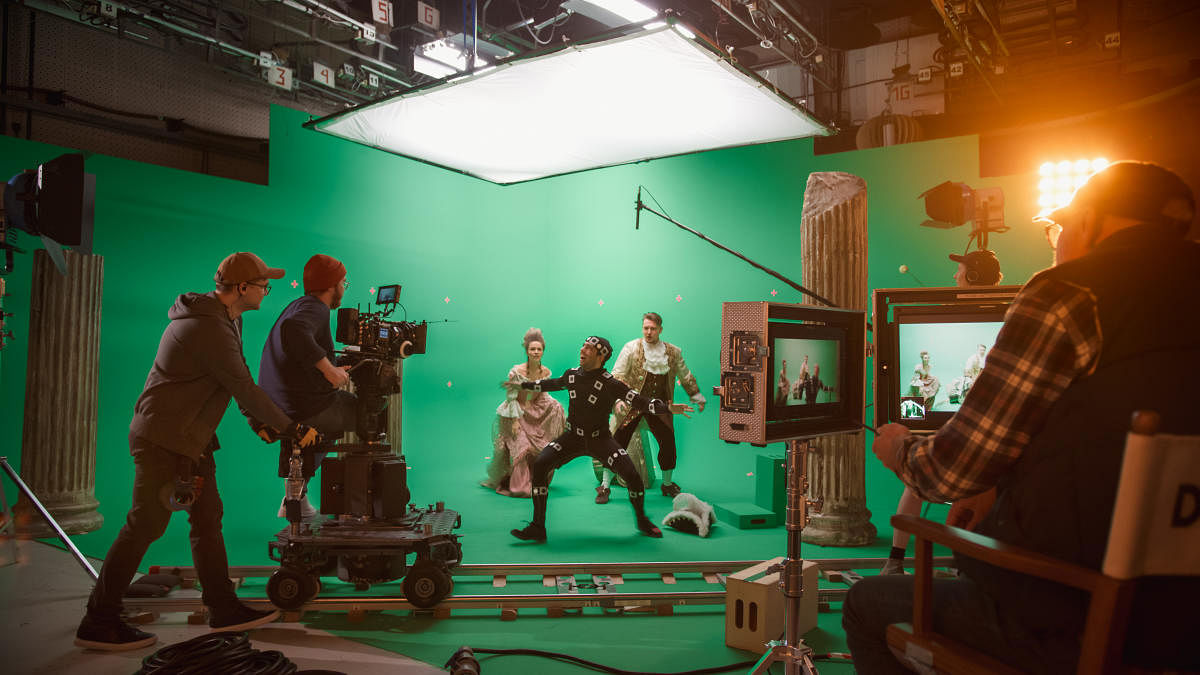
Cinema has truly become our key to past, present, and future as it holds the capacity to mirror them all to any desired extent. Its horizons have been intrinsically expanding like the universe. The world of cinema is driven by artists, storytellers, and actors on the surface but what goes underneath determines the details that lend depth to the cinematic experience. It is here that designers play a role and can consider cinematic design as an attractive career option. The role of designers in cinema initially revolved around the sets and costumes. However, as cinema evolved as a medium to cater not just for recreation but also for mass communication and education new roles for designers emerged.
What do you remember from the last movie you saw? Is it the film poster or a scene that moved you or a location or the outfit of your favourite character? The role of designers in making a movie is in embedding such visual elements to the texture of the film so that you can recall them and construct your memory. From an accessory that the actor wears to the play of light and shadow in the cinematic space; design professionals create and synchronise such elements in a frame to give you a seamless experience of the story. Their interventions range from Set Design to VFX Design, from animation to graphics, from editing to fashion, a designer can choose any one of the several roles on offer at various stages of film production.
Any film needs nearly an army of creative professionals to bring its story alive. They are guided by production designers, who develop a visual concept for the story by defining design style for sets, graphics, props, lighting, and costumes while closely working with the director. Their job stretches through all stages of production, as they are responsible for creating and managing the design vision for the movie. Several institutions offer a three-year postgraduate diploma in production design while there are a few that offer both short and long-term courses ranging from 12 months to 2 years.
In the pre-production phase of the film, one can contribute as a graphic designer, storyboard artist, character designer, and costume designer. In these fields, the relevant specialisations within design are communication design, graphic design, and fashion design. During the production phase, set decoration, prop designing, and set design become more relevant. To pursue a career in set making a Bachelor of Design degree (BDes), Bachelor of Architecture (BArch), or Diploma in Space Design is helpful. Finally, for the post-production phase, that involves final editing and fine-tuning; the editors and VFX artists take the front row to add final visual effects. In fact, there are courses in animation from three months to three year duration that are created to serve such ends.
To make a design career in cinema one needs to imagine and reimagine our realities continuously. This imaginative strength enables one to mold creativity as per the script. A designer’s tools are just as important as his skills. Familiarity with diverse designing software such as Photoshop, Autodesk Maya, Auto desk 3D max, etc., is necessary. The fundamental skills are drawing, sketching, and concept development and they are developed through the course of education. Cinematic design demands diligence and patience through the long working hours. Unlike other professions it does not have fixed working hours. Sometimes design professionals may have to travel to a remote shoot location to deliver tasks at odd hours of the day and night, if the script makes such a demand.
The ever-growing field of cinema and newer forms of engagement of the audience with it are creating more room for careers in cinematic design. Indian Film Industry produces nearly two thousand films per year in about 20 languages, making it the world’s largest producer of films. Its total revenue realisation has observed a growth of 11% CAGR in the past four years. Although the Covid-19 pandemic derailed the expected target of $3.7 billion by December 2020, the industry experts still believe in its resilience. It is an industry that serves as the laboratory where creative professionals can explore and test their creativity and imagination. With newer challenges, interesting workflows, and promising pay scales cinematic design is an attractive industry for design professionals to make a career in.
Courses and the Job roles to consider:
PG Diploma in Production Design (Production Designer)
BA or BSc in Film Making (Film Maker)
BDes in Interaction Design, BDes in Communication Design (Storyboard Artist, Graphic Designer)
Degree/Diploma in Fashion Design, Diploma in Fashion styling (Costume Design)
PG Diploma in Art Direction (Art Director)
Diploma in Set Design, BDes in Space Design (Set Designer, Set Decorator)
Degree/Diploma in Video Editing (Movie Editor)
Degree in Media Graphics & Animation (Animation Artist, VFX Artist)
Diploma in Digital Media Design (Digital Content Creators)
BA in Digital Media Design (Social media content Creators)
(Abhishek Kumar is an Associate Professor and Director, Staff Training and Development at an university and Neeti Patel is a research fellow)